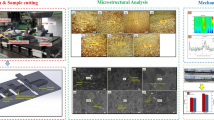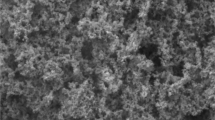Abstract
Three anti-aging agents, including pentaerythritol propionate (1010), bissebacate (770) and bumemetazole (UV326), were selected to improve the aging resistance of SBS-modified asphalt binder (SBSMA). The objective of this study was to determine an optimal combination of those anti-aging agents, namely 1%1010 + 0.5%770, 1%1010 + 0.5%UV326 and 1%1010 + 0.5%770 + 0.5%UV326. The influences of aging on the physical properties of asphalt binders were characterized by a series of conventional tests. Dynamic shear rheometer tests were utilized to describe the rheological behavior and fatigue resistance of asphalt binders. Finally, the evolution of the main functional groups of asphalt binders was analyzed by Fourier transform infrared (FTIR) tests. Several aging indexes were defined to evaluate the aging degree of asphalt binders. Experimental results showed that the anti-aging agents had little influence on the rheological and physical properties for unaged SBSMA, and they did not change the chemical structure of the original SBSMA. However, the results on various aging indexes proved that the thermal oxidative aging resistance of SBSMA was effectively improved by the anti-aging agents. The G*sinδ values indicated that improvement of fatigue resistance of SBSMA was dependent on the combinations of anti-aging agents. Except 1%1010 + 0.5%770, other two composite anti-aging agents could improve the cracking resistance of SBSMA. The FTIR results showed that the anti-aging agents could restrain the generation of carbonyl compounds and the degradation of SBS polymer. Among composite anti-aging agents investigated, the synergic effect of 1010 and UV326 may be the best in practice after considering both rheological and anti-aging properties .

















Similar content being viewed by others
References
Airey G, Brown S (1998) Rheological performance of aged polymer modified binders. AATP 67:66–100
Alatas T, Yilmaz M (2013) Effects of different polymers on mechanical properties of bituminous binders and hot mixtures. Constr Build Mater 42:161–167
Apeagye AK (2011) Laboratory evaluation of antioxidants for asphalt binders. Constr Build Mater 25(1):47–53
Baek J, Ozer H, Wang H, Al-Qadi IL (2010) Effects of interface conditions on reflective cracking development in hot-mix asphalt overlays. Road Mater Pavement Des 11:307–334
Becker Y, Müller AJ, Rodriguez Y (2003) Use of rheological compatibility criteria to study SBS modified asphalts. J Appl Polym Sci 90:1772–1782
Cong PL, Wang J, Li K, Chen SF (2012) Physical and rheological properties of asphalt binders containing various antiaging agents. Fuel 26:350–356
Cong PL, Wang X, Xu PJ, Liu JF, He R (2013) Shuanfa Chen. Investigation on properties of polymer modified asphalt containing various antiaging agents. Polym Degrad Stabil 98:2627–2634
Cong PL, Liu N, Shang HM, Zhao H (2015) Rheological and fatigue properties of epoxy asphalt binder. Binder J Pavement Res Technol 8(5):370–376
Cortizo MS, Larsen DO, Bianchetto H, Alessandrini JL (2004) Effect of the thermal degradation of SBS copolymers during the ageing of modified asphalts. Polym Degrad Stab 86:275–282
Durrieu F, Farcas F, Mouillet V (2007) The influence of UV aging of a styrene/butadiene/styrene modified bitumen: comparison between laboratory and on site aging. Fuel 86:1446–1451
Feng ZG, Xu S, Sun YB, Yu JY (2012) Performance evaluation of sbs modified asphalt with different anti-aging additives. J Test Eval 40(5):728–732
Feng ZG, Wang SJ, Bian HJ, Guo QL, Li XJ (2016) FTIR and rheology analysis of aging on different ultraviolet absorbermodified bitumens. Constr Build Mater 115:48–53
Gorkem C, Sengoz B (2009) Predicting stripping and moisture induced damage of asphalt concrete prepared with polymer modified bitumen and hydrated lime. Constr Build Mater 23:2227–2236
Hernández G, Medina EM, Sánchez R, Mendoza AM (2006) Thermo mechanical and rheological asphalt modification using styrene-butadiene triblock copolymers with different microstructure. Energy Fuels 20:2623–2626
Lesueur D (2009) The colloidal structure of bitumen: consequences on the rheologyand on the mechanisms of bitumen modification. Adv Colloid Interface 145:42–82
Li YT, Li LF, Zhang Y, Zhao SF, Xie LD, Yao SD (2009) Improving the aging resistance of styrene-butadiene-styrene tri-block copolymer and application in polymer-modified asphalt. J Appl Polym Sci 116:754–761
Liang M, Liang P, Fan WY, Qian CD, Xin X, Shi JT (2015) Thermo-rheological behavior and compatibility of modified asphalt with various styrene–butadiene structures in SBS copolymers. Mater Des 88:177–185
Liang M, Xin X, Fan WY, Wang H, Ren SS, Shi JT (2017) Effects of polymerized sulfur on rheological properties, morphology and stability of SBS modified asphalt. Constr Build Mater 150:860–871
Lu XH, Isacsson U (2002) Effect of ageing on bitumen chemistry and rheology. Constr Build Mater 16:15–22
Masson JF, Collins P, Robertson G, Woods JR, Margeson J (2003) Thermodynamics, phase diagrams, and stability of bitumen-polymer blends. Energy Fuels 17:714–724
Mouillet V, Farcas F, Besson S (2008) Ageing by UV radiation of an elastomer modified bitumen. Fuel 87:2408–2419
Nivitha MR, Prasad E, Krishnan JM (2016) Ageing in modified bitumen using FTIR spectroscopy. Int J Pavement Eng 17:565–577
Ouyang CF, Wang SF, Zhang Y (2006) Improving the aging resistance of styrene-butadiene-styrene tri-block copolymer modified asphalt by addition of antioxidants. Polym Degrad Stab 91:795–804
Polacco G, Berlincioni S, Biondi D, Stastna J, Zanzotto L (2005) Asphalt modification with different polyethtlene-based polymers. EurPolym J 41:2831–2844
Polacco G, Stastna J, Biondi D, Zanzotto L (2006) Relation between polymer architecture and nonlinear viscoelastic behavior of modified asphalts. CurrOpin Colloid Interface Sci 11:230–245
Ponniah J, Kennepohl G (1996) Polymer-modified asphalt pavements in Ontario: performance and cost-effectiveness. Trans Res Rec: Trans Res Board 1545:151–160
Rasool R, Wang SF, Zhang Y, Li Y, Zhang GT (2017) Improving the aging resistance of SBS modified asphalt with the addition of highly reclaimed rubber. Constr Build Mater 145:126–134
Ruan Y, Davison RR, Glover CJ (2003) The effect of long-term oxidation on the rheological properties of polymer modified asphalts. Fuel 82:1763–1773
Sengoz B, Topal A, Isikyakar G (2009) Morphology and image analysis of polymer modified bitumens. Constr Build Mater 23:1986–1992
Tayfur S, Ozen H, Aksoy A (2007) Investigation of rutting performance of asphalt mixtures containing polymer modifiers. Constr Build Mater 21:328–337
Wang H, Al-Qadi IL (2010) Evaluation of surface-related pavement damage due to tire braking. Road Mater Pavement Des 11:101–122
Wegan V, Brule B (1999) The structure of polymer modified binders and corresponding asphalt mixtures. AAPT 68:64–88
Xu GJ, Wang H, Zhu HZ (2017) Rheological properties and anti-aging performance of asphalt binder modified with wood lignin. Constr Build Mater 151:801–808
Yu XK, Zaumanis M, Santos S, Poulikakos LD (2014) Rheological, microscopic, and chemical characterization of the rejuvenating effect on asphalt binders. Fuel 135:162–171
Zhang DM, Zhang HG, Shi CJ (2017) Investigation of aging performance of SBS modified asphalt with various aging methods. Constr Build Mater 145:445–451
Zhang DM, Chen ZH, Zhang HL, Wei CW (2018) Rheological and anti-aging performance of SBS modified asphalt binders with different multi-dimensional nanomaterials. Constr Build Mater 188:409–416
Zhu JQ, Birgisson B, Kringos Niki (2014) Polymer modification of bitumen: advances and challenges. EurPolym J 54:18–38
Acknowledgment
This work was supported by the National Natural Science Foundation of China [grant number 51978070] and the Shaanxi Natural Science Basic Research Project [Grant Number 2020JM-265].
Author information
Authors and Affiliations
Corresponding author
Rights and permissions
About this article
Cite this article
Cong, P., Guo, X., Mei, L. et al. Influences of Aging on the Properties of SBS-Modified Asphalt Binder with Anti-Aging Agents. Iran J Sci Technol Trans Civ Eng 46, 1571–1588 (2022). https://doi.org/10.1007/s40996-021-00650-7
Received:
Accepted:
Published:
Issue Date:
DOI: https://doi.org/10.1007/s40996-021-00650-7




